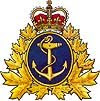
Another interesting call today. This lad phones from Ontario and apparently he's been involved in some sort of marine fender-bender. He's looking for information on a) whether or not he is required to have navigation lights aboard his pleasure craft?; and b) do these have to be turned on precisely at sunset?
The vessel in question is a 14-foot, 25 hp boat. True, not an ocean-going freighter but that doesn't matter one bit. The same rules apply to him as do to a larger commercial vessel. These same rules apply in waters around the globe, because they are based on international conventions. So the old statement of: "But surely...we're just on a small lake here... the rules can't possibly be the same!?!!??", does not hold any water. Rest assured... they are. Boating is so easy, isn't it? It's a real no-brainer...
Anyway, seems our man was putting along when the boat astern of him rams into his ass-end. It was after sunset by all accounts and this lad did not have his nav lights on.
The Collision Regulations of the Canada Shipping Act (remember that bothersome little document, that all boaters are obliged by law to know and abide by???), were drawn up to provide direction on situations like these.
Section III of the Collision Regulations deals with the Conduct of Vessels in Restricted Visibility. (Fog, rain, snow or darkness).
Rule 19 provides specific regulations for the conduct of vessels in restricted visibility.
Rule 20 provides the regulations on Lights and Shapes, dictating that these SHALL be complied with from sunset to sunrise. (Shall is what is called a 'directive'. It's not a suggestion or a friendly hint... It's an ORDER!)
Rule 21 provides the International Definitions for Lights. It will describe what is considerd a: Masthead light, sidelights, sternlight, towing light, all-round light and a flashing light (various colours, various meanings).
Rule 22 Describes the Visibility of Lights - International. This section details the distance from which any given light on a vessel MUST be visible.
Rule 23 provides the specific regulations for Power-driven Vessels Underway - International.
As for when sunset and sunrise occur officially, this data is published daily by Environment Canada and is also widely published on TV channels and in newspapers across the entire nation. There is simply no reason NOT to know.
Sunset by the way, occurs one minute sooner every day after the summer solstice (21st of June...the 'longest' day of the year). Conversely, sunrise occurs one minute earlier every day after the 21st of December, the 'shortest' day of the year. So basically, sunset and sunrise occur at a different time of day, every day of the year.
It's unfortunate that we know very little about this other boater. For as much as this caller was clearly afoul of the Collision Regulations, this does not abrogate the other boater of his responsibilities vis-à-vis these same regulations.
Rule 13 clearly describes the regulations dealing with Overtaking another vessel.
Rule 7 details the regulations for addressing the Risk of Collision. Did the other boater do everything in his/her power to avoid the risk of a collision?
This is one story I would like to be able to follow up on, but unfortunately I don't have that option.
The vessel in question is a 14-foot, 25 hp boat. True, not an ocean-going freighter but that doesn't matter one bit. The same rules apply to him as do to a larger commercial vessel. These same rules apply in waters around the globe, because they are based on international conventions. So the old statement of: "But surely...we're just on a small lake here... the rules can't possibly be the same!?!!??", does not hold any water. Rest assured... they are. Boating is so easy, isn't it? It's a real no-brainer...
Anyway, seems our man was putting along when the boat astern of him rams into his ass-end. It was after sunset by all accounts and this lad did not have his nav lights on.
The Collision Regulations of the Canada Shipping Act (remember that bothersome little document, that all boaters are obliged by law to know and abide by???), were drawn up to provide direction on situations like these.
Section III of the Collision Regulations deals with the Conduct of Vessels in Restricted Visibility. (Fog, rain, snow or darkness).
Rule 19 provides specific regulations for the conduct of vessels in restricted visibility.
Rule 20 provides the regulations on Lights and Shapes, dictating that these SHALL be complied with from sunset to sunrise. (Shall is what is called a 'directive'. It's not a suggestion or a friendly hint... It's an ORDER!)
Rule 21 provides the International Definitions for Lights. It will describe what is considerd a: Masthead light, sidelights, sternlight, towing light, all-round light and a flashing light (various colours, various meanings).
Rule 22 Describes the Visibility of Lights - International. This section details the distance from which any given light on a vessel MUST be visible.
Rule 23 provides the specific regulations for Power-driven Vessels Underway - International.
As for when sunset and sunrise occur officially, this data is published daily by Environment Canada and is also widely published on TV channels and in newspapers across the entire nation. There is simply no reason NOT to know.
Sunset by the way, occurs one minute sooner every day after the summer solstice (21st of June...the 'longest' day of the year). Conversely, sunrise occurs one minute earlier every day after the 21st of December, the 'shortest' day of the year. So basically, sunset and sunrise occur at a different time of day, every day of the year.
It's unfortunate that we know very little about this other boater. For as much as this caller was clearly afoul of the Collision Regulations, this does not abrogate the other boater of his responsibilities vis-à-vis these same regulations.
Rule 13 clearly describes the regulations dealing with Overtaking another vessel.
Rule 7 details the regulations for addressing the Risk of Collision. Did the other boater do everything in his/her power to avoid the risk of a collision?
This is one story I would like to be able to follow up on, but unfortunately I don't have that option.
















No comments:
Post a Comment